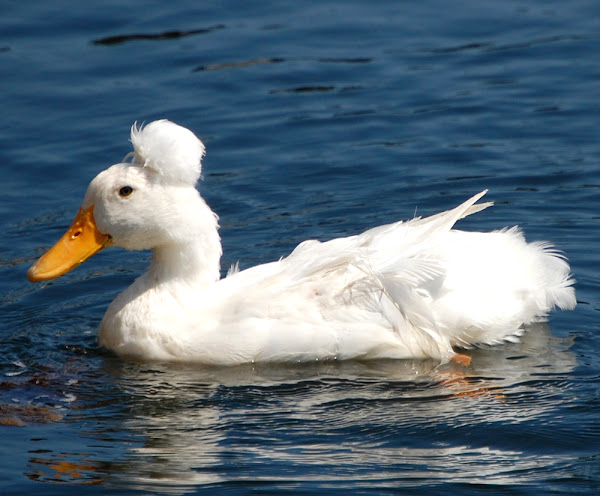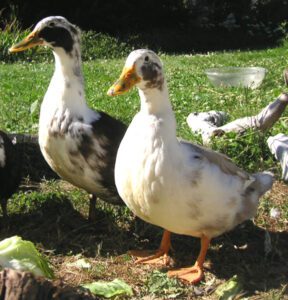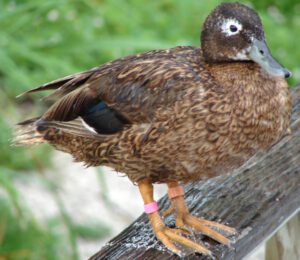The Crested duck is a medium-weight, dual-purpose breed of domestic duck. Exact origin of the Crested duck is unknown, but they have been around since before the 1600s. They were portrayed in Dutch painting around the seventeenth Century.
The breed probably originates in the East Indies, with subsequent development in Europe. And it was probably brought to Europe form East Indies by Dutch ships. The Crested duck is truly striking with the powder puff of feathers on it’s head. The breed has such appearance because it is heterozygous for a genetic mutation causing a deformity of the skull.
Crested ducks came to the United States around the mid 1800s. The breed was admitted to the British Standard in 1910. Any color is permitted in the United Kingdom and in several other European countries.
White Crested duck was admitted into the American Poultry Association’s Standard of Perfection in 1874, and the Black variety was added in 1977.
There is a bantam version of this breed which was bred by John Hall and Roy Sutcliffe in the United Kingdom in the late 20th Century. The bantam version is called the Crested Miniature, which was recognized in 1997.
Crested Duck Characteristics
Crested duck is a striking, medium sized and dual purpose duck breed. It has very prominent features. The bodies of the Crested ducks are carried at an angle from which the medium length neck stands straight. Their head is covered by a thick crest.
The head crest looks like an Afro. The White Crested ducks have long beak and legs. And their beak and legs are of pale orange color. And the Black variety has dark gray colored beaks and legs.
White and Black varieties of the Crested duck are recognized by the American Poultry Association’s Standard of Perfection. But other color varieties such as Buff, Blue and Grey (Mallard coloration) have been developed by breeders.

On average Crested ducks weight about 2.7 kg, and drakes about 3.2 kg. And the bantam version weights between 0.9 to 1.2 kg. Photo from Wikipedia.
Uses
Crested duck is a dual purpose breed. They are suitable for both meat and eggs production. But they are mainly used for ornamental and exhibition purposes. They are also good as pets.
Special Notes
The Crested ducks are fairly quiet birds. And they are usually calm and friendly in nature. They can be raised as pets for their friendly behavior.
The ducklings grow relatively fast, so they are good meat duck breed. And the ducks are pretty good layers of large eggs. But they are not good foragers like the Bali ducks. Review full breed profile of the Crested duck in the chart below.
| Breed Name | Crested |
| Other Name | None |
| Breed Purpose | Meat, Eggs, Exhibition, Ornamental, Pets |
| Special Notes | Calm, Friendly, Fast Grower |
| Breed Class | Medium |
| Broodiness | Poor |
| Drake | About 3.2 kg |
| Duck | About 2.7 kg |
| Climate Tolerance | All Climates |
| Egg Color | Off White |
| Egg Size | Large |
| Egg Weight | About 80 to 90 grams |
| Egg Productivity | Medium |
| Flying Ability | Poor |
| Rarity | Common |
| Varieties | Black, White |
| Country of Origin | Unknown (Probably from East Indies) |







can you tell me who the author is of this article?
Yes, sure! Mr. Roy is the author of this article.